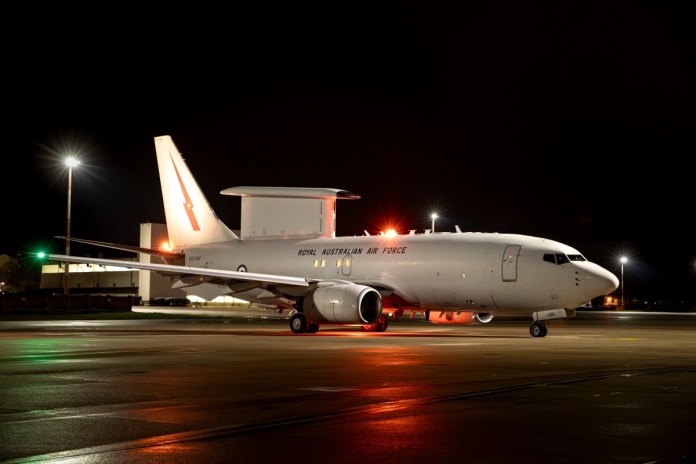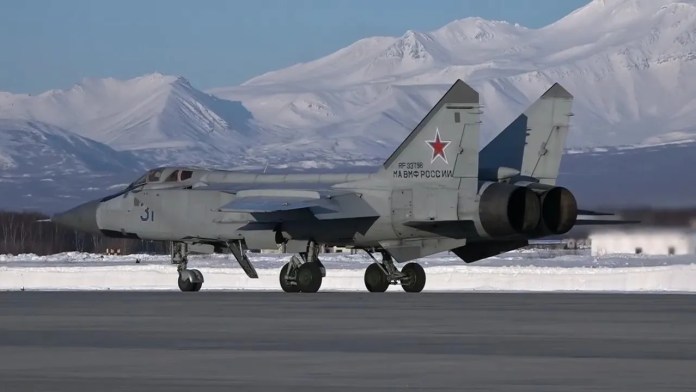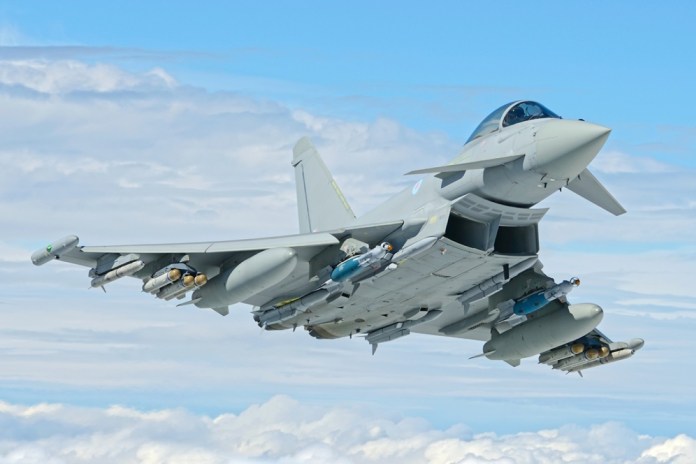TAIPEI - China's state-run Xinhua News Agency announced Aug. 10 the beginning of sea trials for China's first aircraft carrier, the former Soviet aircraft carrier Varyag.

China's first aircraft carrier, the former Soviet carrier Varyag which China bought from Ukraine in 1998, undergoes refitting at the port of Dalian on July 4. The aircraft carrier started its first sea trial Aug. 10, the state news agency Xinhua said (AFP)
"China's refitted aircraft carrier left its shipyard at Dalian Port in northeast Liaoning Province on Wednesday morning to start its first sea trial," said the Xinhua report. "Military sources said that the first sea trial was in line with schedule of the carrier's refitting project and would not take a long time. After returning from the sea trial, the aircraft carrier will continue refit and test work."
Photos of the Varyag indicate it has been outfitted with an active phased array radar (similar to the U.S. Aegis System), a Type 381 Sea Eagle Radar, a 30mm Type-1030 close-in weapon system, and an FL-3000 Flying Leopard air defense missile system.
The large number of personnel on board recently and the testing of the engines, with smoke belching from the funnel, indicate that the propulsion systems have been installed and the ship is reaching seaworthiness, said Gary Li, an intelligence analyst for U.K.-based Exclusive Analysis.
Debate and mystery still surround the former Kuznetsov-class carrier. Procured by a Hong Kong travel agency in 1998 for $20 million, purportedly to serve as a casino in Macau, the Varyag has been the focus of debate among China watchers ever since it bypassed Macau for the Dalian Shipyard in northeast China in 2002.
The Chinese-language media are still arguing over whether the vessel will be christened the Shi Lang, after the Ming-Qing Dynasty naval admiral who conquered Taiwan in 1681, or Liu Huaqing, the father of China's modern Navy.
What is certain is that it will not be the last Chinese aircraft carrier. There are indicators, though anecdotal, that China is preparing to build up to three carriers at the Jiangnan Shipyard on Changxing Island in Shanghai.
Job-wanted advertisements in local newspapers have dropped hints the work is for a carrier program, Li said.
Li said one recent job advertisement for a heavy-lift vehicle contract said it sought "drivers to work on carrier project." There have also been reports by residents that "blonde foreigners," possibly Ukrainian engineers, have been seen living in a hotel near the shipyard.
Observers must be careful not "to fall into the trap of using every bit of gossip from some dockside fruit seller as fact," he said. China's carrier program has become a "heavy rumor mill." With 11 aircraft carriers at its disposal, the U.S. has little to fear from China's carrier program. Even if China had several aircraft carriers, "I don't think it will reshape the strategic balance much in favor of China," said Zhuang Jianzhong, vice director of the Center for National Strategy Studies at Shanghai Jiao Tong University.
However, Taiwan, the Philippines and Vietnam face a different scenario. China has threatened to invade Taiwan if it continues to resist unification. An aircraft carrier off Taiwan's eastern coast would close off access by the U.S. military coming to the island's aid during a war.
Vietnam and the Philippines have been facing problems with an aggressive Chinese Navy in the South China Sea, which China claims as a "core interest." On Aug. 3, the People's Daily, China's main Communist Party newspaper, warned the Philippines against building a shelter on the disputed Nansha Island in the Spratly Islands, calling it "a severe strategic error." As part of Vietnam's insurance against continued Chinese threats, the Navy is procuring Russian arms, including six Kilo-class attack submarines, two Gepard-class missile frigates and 20 more Sukhoi Su-30 fighter aircraft armed with anti-ship missiles. Vietnam's Navy has five aging Russian-built Petya-class frigates, two North Korean-built Yugo-class midget submarines, along with several missile corvettes. Any conflict between the navies of China and the Philippines or Vietnam would be an "unequal contest," said Carl Thayer, a Southeast Asia specialist at the Australian Defence Force Academy.
"China's South Sea Fleet should be quite capable in fending off any threats that Vietnam could offer. The Philippines Navy in its present state would be destroyed at a distance due to lack of sensors, appropriate strike weapons and air cover," Thayer said.
At present, the Vietnamese could land some punches, he said.
"Vietnam might be able to pull off a few surprises through deception with hit-and-run raids by guidedmissile fast-attack craft or by luring Chinese ships into range of its Bastion land-based anti-ship missiles," he said.
Vietnam possesses some "potent" anti-ship missiles but lacks the experience to stand up to China's South Sea Fleet.
Such a conflict would most likely occur with sufficient warning time for the Philippines and Vietnam to withdraw their naval forces and not engage in a head-to-head naval confrontation, Thayer said.
"The United States has promised to assist the Philippines with maritime domain awareness, and it is not inconceivable that the U.S. might forewarn Vietnam if China began to build up and deploy a naval force on Hainan Island," he said.
Chinese plans to field one or more aircraft carriers would change the equation. China's South Sea Fleet has already been improving 3-D combat at sea - surface, subsurface and air - with numerous exercises over the past two years. China could also bring in elements from the East and North Sea fleets to assist in any sea battle in the South China Sea.
CHRONOLOGY
* 1992: Soviet Union stops construction of the Varyag, a former Kuznetsov-class carrier, at 60 percent complete.Ownership is later transferred to Ukraine.
* April 1998: Ukraine puts the Varyag up for auction. The Chong Lot Travel Agency procures the ship for $20 million for use as a "casino" in Macau.
* 2001: Ukraine sells a prototype of the Sukhoi Su-33 carrier-borne fighter jet to Shenyang Aircraft Corp.
* March 2002: Vessel arrives in Dalian Shipyard, China.
* June 2005: Refurbishment begins.
* September 2008: The PLA Daily newspaper announces that 50 pilots were inducted at the Dalian Naval Academy to undergo training on ship-borne aircraft flight.
* 2009: A mock-up of the Varyag is constructed at the Wuhan Naval Research Facility near Huangjie Lake, Wuhan, China.
* 2010: Photos surface of the J-15 Flying Shark, which is identical to the Su-33.
* 2011: April: A People's Daily website reports the Varyag has entered its last stage, with the hull being painted light gray-blue, standard for all ships in the Chinese Navy.
* June 7: Gen. Chen Bingde, chief of the General Staff of the People's Liberation Army, admits in a newspaper interview with the Chinese-language Hong Kong Commercial Daily that China has an aircraft carrier program.
* July 27: The Chinese Defense Ministry officially confirms the Varyag is being refitted as a "scientific research, experiment and training" vessel.
* July 29: Gen. Luo Yuan, a senior researcher with the Academy of Military Sciences, tells the Beijing News that China would need a minimum of three aircraft carriers.




